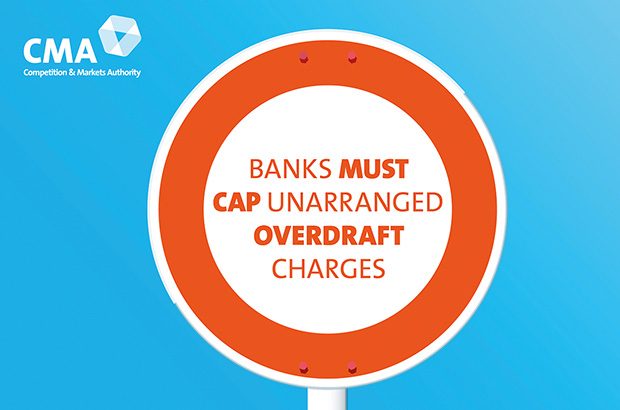
Are you a small business owner unsure how to compare banks and shop around for a cheaper loan or a better business bank account?
Or a personal current account user bemused by unarranged overdraft charges, and unclear how to compare the services from different banks?
From today, 2 important changes come into force to make it easier to know what charges you might face, as part of the Competition and Markets Authority’s (CMA) shake up of the banking industry.
Action on overdrafts
First, we’re forcing banks to be more transparent about the cost of overdrafts and unarranged overdrafts, in particular, which cost customers around £1.2 billion per year.
As of today, all banks must have set, and publicised, a ceiling (or cap) on their unarranged overdraft charges, in the form of a monthly maximum charge (MMC). This is the maximum that the bank can charge a customer during any given month, taking together all types of unarranged overdraft charges.
We’re pleased to see some banks have already responded by introducing a cap earlier than required to – or doing away with these charges altogether. But those that have not must now do so.
We’ll be building on these changes in January next year, when banks will be required to alert their customers if they are about to go into an unarranged overdraft, so that customers have a chance to avoid doing so. We also welcome the Financial Conduct Authority’s (FCA) work on high-cost credit, including a further look at unarranged overdrafts, announced earlier this week. This builds on our work and questions whether there is a place for this type of borrowing in modern banking markets.
Our investigation concluded that if banks were made to be more transparent about how they charge their customers, this would put them under pressure to bring charges down and would help customers avoid unnecessary charges. While there is still some way to go to ensure all customers get a better deal, we’re encouraged to see improvements are starting to happen.
Small business owners
Second, we’re requiring banks to be clearer about the cost of borrowing for small and medium-sized businesses (SMEs). From today, all providers of unsecured loans and overdrafts to SMEs, for values up to £25,000, will have to publish and clearly display the rates they will charge for doing so. And we have asked them to make it easier by using similar measurements (eg annual percentage rates (APRs)) to those used on personal loans and credit cards.
If anything, we think small businesses face greater problems than personal current account holders – not least the lack of transparency of information on offer. There are many reasons why SMEs do not shop around – which our probe showed is the best way of getting a good deal – and the lack of easy-to-find information contributes to this. We also know that, when it comes to lending, small businesses often need quick decisions. They do not want to speak to lots of different providers all asking for different information. Transparent information on lending rates, published in an accessible format, will make it far easier for them to understand the deal they’re currently getting, and quickly compare it with other lenders to see if they could do better elsewhere.
The customer in the driving seat
These changes are all part of a package of measures we announced last year, to make banks work harder for their customers and help people take control of their banking, by using innovative new services. The remainder of these measures will be introduced over the course of next year.
To get a better deal, bank customers need:
- easy access to the right information on banks’ charges and service quality
- the ability to take control of data about their own usage
- easy-to-use comparison tools to combine banks’ information with data on their usage
- a switching service they have confidence in
At the core of this is the development of Open Banking, following the CMA’s recommendation that there be a technological overhaul in the way banks allow customers to use digital tools.
There is already a very active and growing financial technology (FinTech) community in the UK, which has been introducing new products using established digital technology. Open Banking takes this further, for example, by allowing customers to do all their banking, and compare banks’ deals, in one easy-to-use app.
Requiring banks to provide customers access to their data and securely share it with trusted third parties is the first step allowing greater innovation in this sector. When it’s ready, it will transform the way our banks – and their customers – do business.
Subscribe to our blog for updates and follow us on Twitter @CMAgovuk, LinkedIn and like our Facebook page.
2 comments
Comment by James Sherwin-Smith posted on
"Second, we’re requiring banks to be clearer about the cost of borrowing for small and medium-sized businesses (SMEs). From today, all providers of unsecured loans and overdrafts to SMEs, for values up to £25,000, will have to publish and clearly display the rates they will charge for doing so."
Is it only a requirement of *banks*, or *all providers* of these products (i.e. non-bank providers too)?
Comment by Adam Land posted on
Alternative lending platforms, such as peer to peer lending and invoice trading were not within the terms of reference for the investigation and therefore do not fall within the scope of our remedies. However, traditional banks account for most SME lending under £25,000, with around 90% of SMEs going to their main bank for their lending requirements.